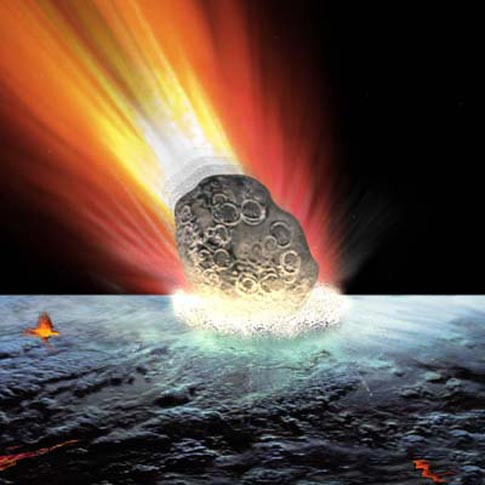NASA Ames Research Center Director Dr. Simon “Pete” Worden (Brig. Gen., USAF, ret.) will deliver the keynote address on March 5 to open the second Planetary Defense Conference organized by The Aerospace Corporation and co-sponsored by NASA, the European Space Agency, the Planetary Society, and other organizations.
The conference, to be held March 5-8 at George Washington University in Washington, D.C., will feature top scientists and engineers from the international space community. They will be assessing our ability to discover and track near-Earth objects as well as our ability to deflect an asteroid or comet that poses a threat to Earth.
Dr. William H. Ailor, director of the Center for Orbital and Reentry Debris Studies at The Aerospace Corporation and general chair of the conference, pointed out that advances in space system technology and better data on asteroids and comets means it is becoming increasingly feasible to counter a threat to Earth.
“It is not that far-fetched to imagine that the next generation of engineers and scientists will be called upon to deal with an asteroid threat,” he said.
Keynote speakers, besides Worden, include Dr. Michael Simpson, president of International Space University in Strasbourg, France, space historian William E. Burrows, who teaches at New York University, and Renee Oosterlinck, director of external relations at the European Space Agency and a professor at Ghent University.
Two sessions on “The Discovery and Characterization of NEOs” will be held on March 5, one chaired by Dr. David Morrison of NASA Ames and one chaired by Dr. Donald K. Yeomans of NASA’s Jet Propulsion Laboratory. These sessions will examine the state of our knowledge about asteroids and comets and activities planned to improve our understanding.
A session on “Deflection Techniques,” chaired by Dr. David K. Lynch of The Aerospace Corporation, and a session on “Deflection Missions and Technology,” chaired by Dr. Gianmarco Radice of the University of Glasgow, will be held on March 6. These two sessions will explore explosive and non-explosive techniques for deflecting a threatening object and issues associated with executing a mission, including the central question: “Can we get there with today’s technology?”
The March 7 program will feature a session on “Impact and Effects,”
chaired by Dr. Clark Chapman of Southwest Research Institute, and a session on “Preparing the Public,” chaired by Prof. Caron Chess of Rutgers University. The first session will focus on the consequences of an asteroid or comet impact, and the second on how the public and disaster relief agencies might react to an impact or the threat of an impact.
A political and policy panel discussion will be held on March 8. Prof.
Richard Crowther of Rutherford Appleton Laboratories in the UK will moderate the discussion. This session will highlight non-technical issues associated with developing a worldwide mitigation capability and executing a response should a serious threat be detected.
“Some believe that all of this is science fiction,” Ailor stated, “but we know that an asteroid (Apophis) 300 meters in diameter, large enough to cause serious damage, will pass within 20,000 miles of Earth-closer than our weather satellites-in 2029, and an impact by the same asteroid in 2036 cannot be ruled out. This conference will help improve our readiness should we need to defend our planet in the future.”
Panel session findings and recommendations will be presented at the close of the conference, meant to build on results of the inaugural event, held in Anaheim, Calif., in Feb. 2004.










